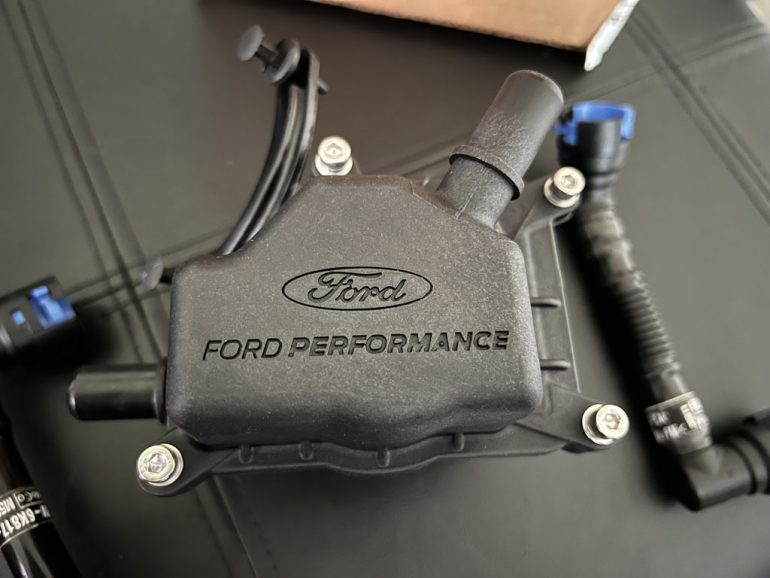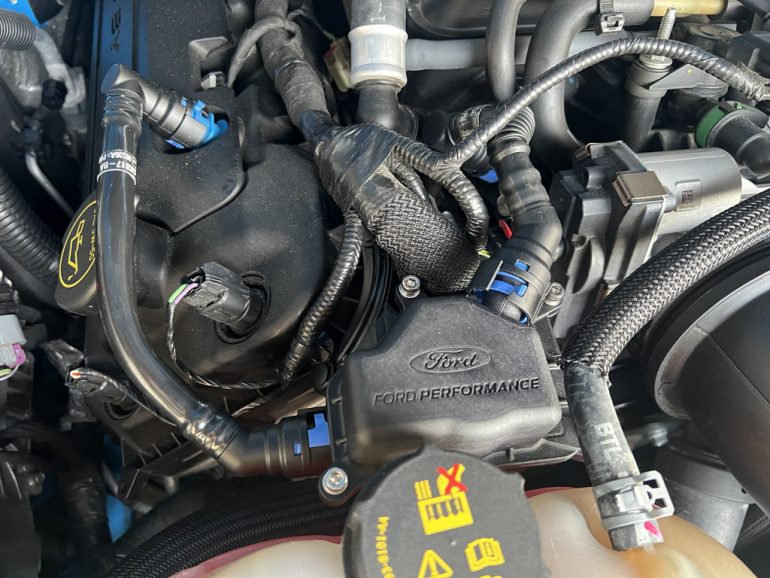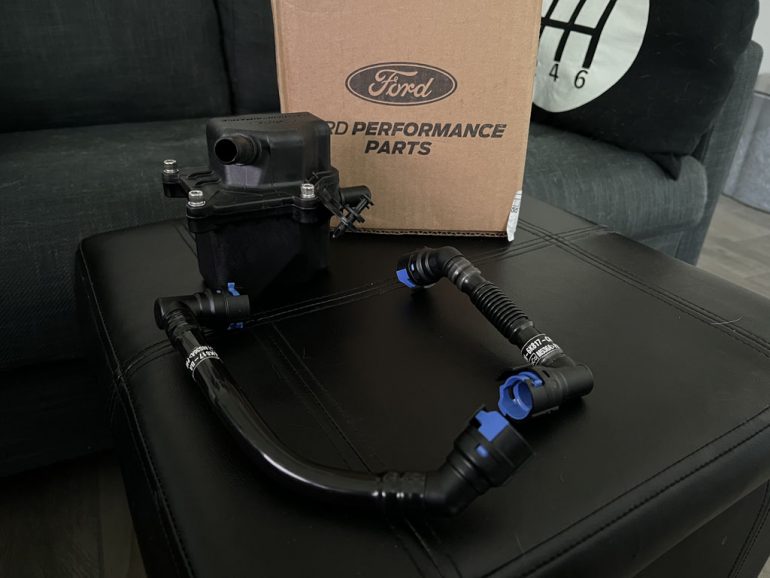
When it comes to high-performance vehicles like the Ford Mustang Shelby GT350, enthusiasts often focus on the big picture: the high-revving flat-plane crank engine, the unique aero, and the remarkable handling aspects that elevate the Mustang platform to new heights. However, there’s one crucial but often overlooked component that plays a significant role in maintaining a high-performance engine over the long term, such as in the Shelby GT350 – the oil catch can.
With its naturally aspirated 5.2-liter flat-plane crank V8 engine producing 526 horsepower and revving to 8,250 rpm, the GT350 is an embodiment of American muscle car prowess with an underlying sports car attitude. Its aggressive styling and track-tuned suspension system make it a joy to drive, on and off the track.
Even the most formidable of engines can suffer from a common issue – excessive oil vapor buildup in the intake system. This is where an oil catch can comes into play.

Modern performance engines, like the one in the Shelby GT350, utilize a Positive Crankcase Ventilation (PCV) system. This system is designed to recycle blow-by gases and oil vapors from the crankcase back into the intake manifold for combustion. While this is an efficient way to reduce emissions, it can have adverse effects on engine performance and longevity.
Oil vapor, if not adequately separated from the blow-by gases, can accumulate in the intake manifold and on critical engine components. This buildup can lead to several problems:
Find the Best Price on the Ford Performance Oil Catch Can on Amazon
Oil catch cans are simple yet highly effective devices designed to address these issues. They work by intercepting the oil vapor and separating it from the blow-by gases before they enter the intake manifold. Here’s why an oil catch can is essential for cars like the GT350:
Installing an oil catch can on your GT350 is a relatively straightforward process, but it’s crucial to choose a high-quality catch can and follow the manufacturer’s instructions. Regular maintenance involves emptying the canister of collected oil and ensuring the hoses and fittings are clean and secure.

For our Automotive Addicts Shelby GT350, we went with the Ford Performance passenger-side oil-air separator (oil catch can) provided to us through our vendor at American Muscle. The installation took all of 10 minutes, literally. The only complaint we have is some of the bolts to remove the top to access the can for emptying it out are rather difficult to reach because of the wire harness that resides above a corner of the unit. Otherwise, it is a clean install that looks like it is an original equipment item.

An oil catch can may be a small add-on that seems insignificant at first, but it’s ultimately a solution that can help maintain your GT350’s engine health and keep it running at its best. Investing in one is not just a smart move; it’s a necessary one for any enthusiast looking to maximize the performance and longevity of their high-performance vehicle.


Malcolm Hogan is the founder and editor of Automotive Addicts, a trusted voice in the automotive media world for over two decades. With 20+ years of hands-on experience covering the industry, Malcolm has built a reputation for delivering honest reviews, sharp insights, and in-depth coverage of everything from new car debuts to high-performance test drives. Passionate about the evolving car culture and staying ahead of the curve, Malcolm continues to lead Automotive Addicts as a go-to destination for enthusiasts and industry insiders alike.